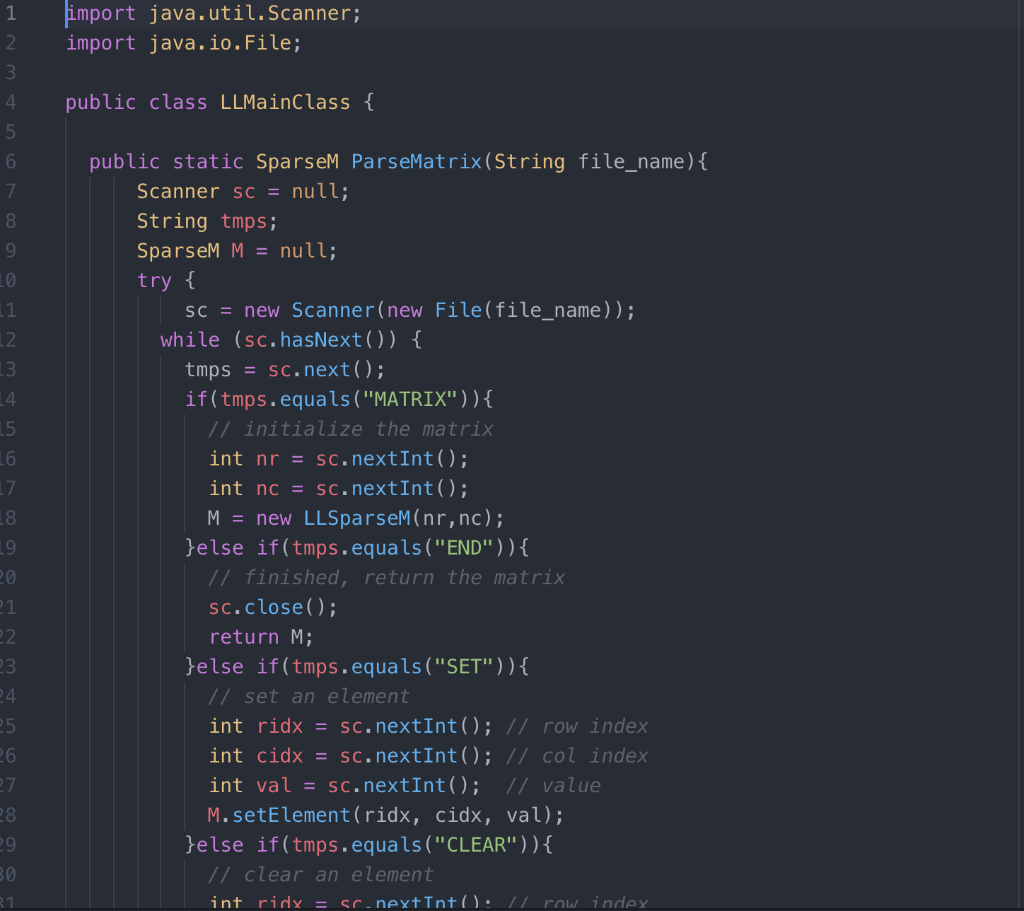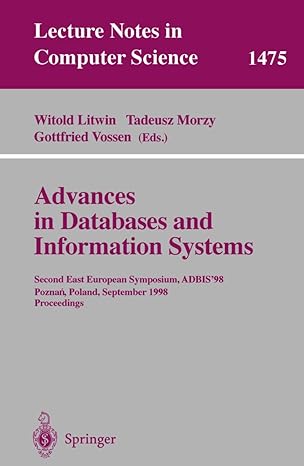Question
Implement the linked list sparse matrix class in LLSparseMat.java so that LLMainClass can be executed with MAT argument. -------------------------------------------------------------------------------------------------------------------------------------------------------- //this is the class that needs
Implement the linked list sparse matrix class in LLSparseMat.java so that LLMainClass
can be executed with MAT argument.
--------------------------------------------------------------------------------------------------------------------------------------------------------
//this is the class that needs to be completed
public class LLSparseM implements SparseM {
public LLSparseM(int nr, int nc){ return; }
@Override public int nrows() { // TODO Auto-generated method stub return 0; }
@Override public int ncols() { // TODO Auto-generated method stub return 0; }
@Override public int numElements() { // TODO Auto-generated method stub return 0; }
@Override public int getElement(int ridx, int cidx) { // TODO Auto-generated method stub return 0; }
@Override public void clearElement(int ridx, int cidx) { // TODO Auto-generated method stub
}
@Override public void setElement(int ridx, int cidx, int val) { // TODO Auto-generated method stub
}
@Override public int[] getRowIndices() { // TODO Auto-generated method stub return null; }
@Override public int[] getOneRowColIndices(int ridx) { // TODO Auto-generated method stub return null; }
@Override public int[] getOneRowValues(int ridx) { // TODO Auto-generated method stub return null; }
@Override public SparseM addition(SparseM otherM) { // TODO Auto-generated method stub return null; }
@Override public SparseM subtraction(SparseM otherM) { // TODO Auto-generated method stub return null; }
@Override public SparseM multiplication(SparseM otherM) { // TODO Auto-generated method stub return null; }
}
LLSparseVec.getAllValues().
- NOTE that these methods should all be linear to the number of nonzero rows or
nonzero elements
.

Step by Step Solution
There are 3 Steps involved in it
Step: 1

Get Instant Access to Expert-Tailored Solutions
See step-by-step solutions with expert insights and AI powered tools for academic success
Step: 2

Step: 3

Ace Your Homework with AI
Get the answers you need in no time with our AI-driven, step-by-step assistance
Get Started


